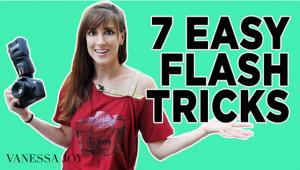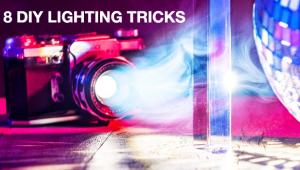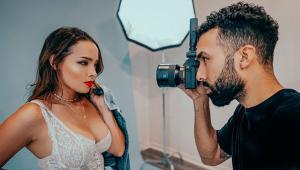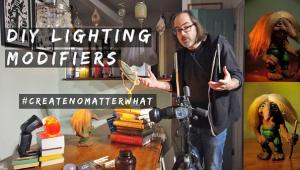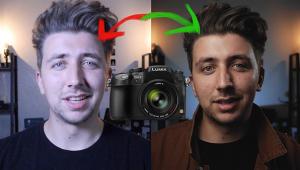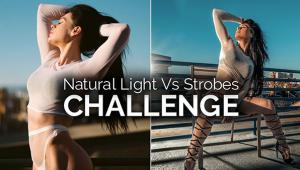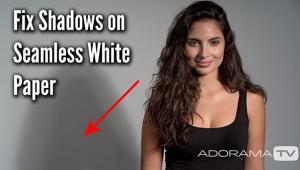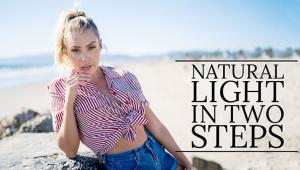6 Pros Share Their Lighting Secrets for Better Portrait Photography
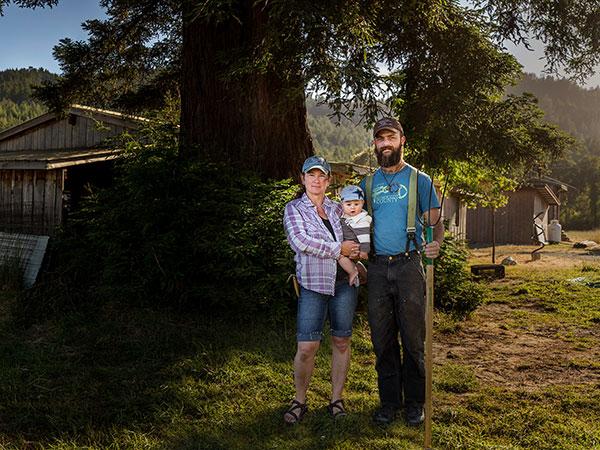
As people move through different stages of their life, photographic records of these events are the mainstay of the portrait photographer’s business model. The idea of hiring a professional photographer to capture life’s important moments will never be completely replaced by relying on family or friends to “just take a picture.”
There are many differences between hiring a professional and depending on a friend with a smartphone or camera besides the obvious reason—quality. A professional photographer understands lighting and can ensure that people will look their absolute best.
While there are many aspects to the portrait photography business, this column is going to focus on lighting your way to success by exploring the various lighting techniques and equipment employed by the pros. Special thanks to our contributing photographers for both their time and insights: Shane Ernest (Rare Photography), Tony Gale, Christine Hall, and Helen Melville.
Shutterbug: What types of lighting are your clients looking for in photos these days? What about natural lighting? Is that something clients ask for and how often do you shoot in just natural light?
Christine Hall: I always shoot in natural light. I believe my clients are looking for an artistic view of their family and sometimes that includes the use of light and shadows.
Tony Gale: I find that clients are looking for a range of lighting—sometimes natural light, sometimes something more creative. However, most often, they aren’t sure what they want and I walk through options with them to figure out the best solution for a particular shoot. Also, I often use strobes to mimic natural light. While natural light can be beautiful, sometimes because of weather or timing the beautiful natural light just isn’t there yet I still have to make a great photograph for my client. It’s one of the ways that a photographer can demonstrate value to a client: I can solve your problem and make it look as natural or stylized as you would like.
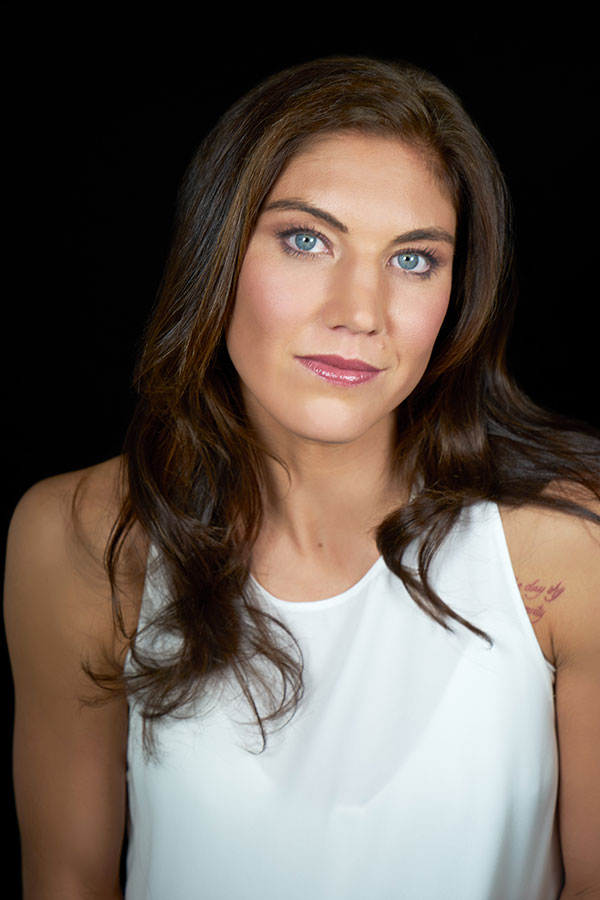
Helen Melville: I assess what lighting method will be appropriate for each job, based upon the information that my client provides on what they’re wanting to achieve. I’ve worked hard to build a portfolio that has a distinctive style of lighting, so any clients who approach me understand that this is the style of lighting that we’ll be working toward. We’ll complete a full shoot in natural light most often in situations where there are serious time and budget restrictions. I use studio flash most of the time but also shoot in natural light. I like to shoot in studios that have interesting outdoor locations adjacent to them, so that we can shoot most of our setups in the studio and then shoot an extra final setup in natural light outside for a bit of variety. I love shooting outside at dusk and dawn. I’m averse to shooting in direct sunlight most likely because I’m originally from Australia, where direct sun is very harsh.
Shane Ernest: The term “real” keeps coming up, as in “real people, real locations, actual users,” especially with any aspirational brands or food-based businesses. Typically, clients come with some ideas in mind, but they are looking for me to provide feedback based on their specific goals and budgets. Since I shoot on-location frequently, natural light is always a factor. However, with my lighting style everything comes out pretty natural, but enhanced to add some character that relates to the brand. When shooting a library of images, I’ll typically have a few images that are more produced and require lighting, where the remaining 20+ photographs are natural light only.
SB: Do you spend a lot of time shooting in the studio? If so, what lighting gear do you typically use and why?
Helen Melville: As above for the first question. I use a combination of Elinchrom and Profoto lights. I’ve had a set of five Elinchrom monoblock D-Lite heads since I started out and am impressed that they’ve never broken down, are real workhorses, and travel well. Considering their low cost, I’d expected to need to replace them by now but just haven’t needed to! I use these to light backgrounds, props, and as general room fill. I use a lot of Neutral Density (ND), CTO, and CTB gels on these. I use softboxes, umbrellas, and other light shapers as needed. I use a couple of Profoto B1 500 Air heads with octaboxes to light people, as they go down to a nice low output to give that moodier look I like. I love that these are battery-powered since cables can become so messy in a studio setting. I avoid using gels on these lights as even ND will skew the color balance on skin, which is particularly noticeable when shooting low-key scenes. To change the color balance of the light that’s hitting my subject I add gels to the background and surrounding areas and counterbalance that in my Raw color grade. I shoot tethered to my computer 80 percent of the time and will normally set a rough color grade to auto apply as each shot loads to my software.
Tony Gale: I shoot in a studio occasionally—it just depends on the client and their needs. I also have a few personal projects I will rent studio space for. I use Bowens strobes primarily, a combination of XMT, XMS, and Gemini monolights. For modifiers I use Lastolite and Bowens; I especially love the Lastolite HiLite.
Christine Hall: I have a storefront but it is used for sales and where we do our framing.
Shane Ernest: I rarely photograph people in the studio. If anything, setting up a seamless and a few strobes that’ll keep different faces looking good is as close as I get.
SB: When lighting for outdoor shoots what do you typically use?
Helen Melville: I usually will use reflectors and flags only for these. I usually shoot at dawn or dusk to achieve that moody look. I enjoy introducing light flares from the low sun, particularly on hazy afternoons.
Christine Hall: I don’t use lighting for outdoor shoots.

Shane Ernest: I’ve been really enjoying the portability and power behind the Phottix Indra500 coupled with a color chart and some patience in post. It’s incredibly lightweight, keeps color consistent enough, and has great power off a small battery pack. Although if I’m renting for a job, I’ll likely grab some Profotos to keep that color more consistent while being a bit heavier and more expensive. Important accessories for shooting outdoors: sandbags galore, sturdy stands with wide bases, and modifiers that don’t turn into sails or parachutes.
Tony Gale: For outdoor portraits it depends on how much time I have and if I have an assistant. I sometimes use speedlights with Lastolite modifiers, especially the Ezybox Speed-Lite 2 and the Ezybox Hot Shoe Softbox. I will also sometimes bounce a speedlight off a Lastolite TriGrip since I can hold the camera with one hand and the reflector with the other. If it’s a bigger production or I need more power, I’ll use the Bowens XMT battery-powered strobe with a softbox.
SB: What advice do you have for those looking at portrait photography as a business—pitfalls to avoid or opportunities to pursue? Also, what lighting trend do you see happening in the near future?
Helen Melville: I have found it to be very important to think carefully about my business plan and to stay on top of my cost of doing business. I have always focused on differentiating myself from others by using lighting that’s difficult for the average hobby photographer to consistently achieve. I think it’s really important to think carefully about what your style is and to build your portfolio to reflect this. Sure, you may be shooting a really wide variety of jobs, but you don’t need to put all of that variety into your portfolio—it confuses your message.
If you’re in the very early stages of your photography career I highly recommend picking up some photography assisting work before launching your own business. I found this to be a really important learning experience.
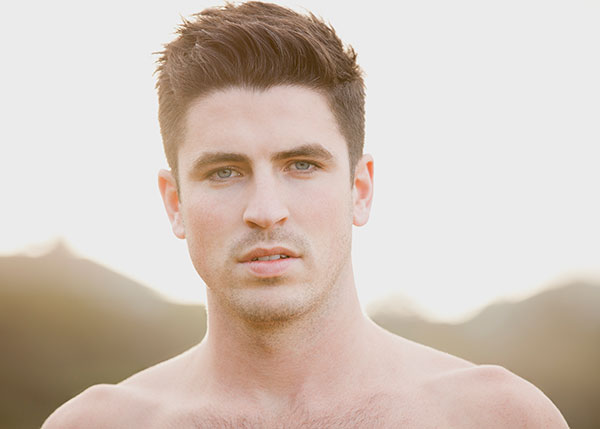
Shane Ernest: Keep providing value to clients beyond just creating a portrait for them. It’s important to know why they’re needing portraits: what’s the actual problem that you’re solving for the client and why are they choosing you. While looking at trends is important to stay current in a dynamic industry, don’t let the shiniest object overpower your personal approach to creating portraits. Look for ways to educate yourself on other areas of the industries you’re serving and keep an eye out for new channels of business that may be worth servicing.
Christine Hall: Know your numbers and know where you make a profit. Start your business right from the start as far as taxes and QuickBooks, and keep systems for everything. I was bad at first having systems but now that I do, I do not waiver from them so my answers stay the same with everyone. I really do not look at trends; I know what I enjoy shooting and what I want to see as an artist. I almost miss the days when I had no one to compare myself to except for the photographers I learned about in college through books.
Tony Gale: Portrait photography is a wonderful but challenging specialty. Because so many people shoot portraits, it’s important to differentiate yourself. There is a lot of emphasis on lighting that looks natural, but I think the future is understanding light enough that you can create natural-looking light artificially. So many people can pick up a camera and call themselves a photographer, but the people who can make a good photograph under any circumstance are much rarer.
Resources
Shane Ernest: rarerthan.com
Tony Gale: tonygale.com
Christine Hall: christinehallphotography.com
Helen Melville: helenmelvillephotography.com

